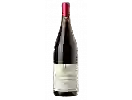
Langlois-ChateauPouilly-Fumé Les Pierrefeux
In the mouth this white wine is a with a nice freshness.
This wine generally goes well with pork, vegetarian or shellfish.
Taste structure of the Pouilly-Fumé Les Pierrefeux from the Langlois-Chateau
Light | Bold | |
Dry | Sweet | |
Soft | Acidic |
In the mouth the Pouilly-Fumé Les Pierrefeux of Langlois-Chateau in the region of Loire Valley is a with a nice freshness.
Food and wine pairings with Pouilly-Fumé Les Pierrefeux
Pairings that work perfectly with Pouilly-Fumé Les Pierrefeux
Original food and wine pairings with Pouilly-Fumé Les Pierrefeux
The Pouilly-Fumé Les Pierrefeux of Langlois-Chateau matches generally quite well with dishes of pork, shellfish or spicy food such as recipes of english breakfast, chipirons / squids with tomato (basque country) or tunisian mloukia of grandmother mimi.
Details and technical informations about Langlois-Chateau's Pouilly-Fumé Les Pierrefeux.
Discover the grape variety: Pavana
A very old grape variety grown mainly in Italy. Nowadays, it can be found much more in the Trentino region and in the province of Bellino, ... in France it is almost unknown. Note that it is related to Schiava Lombardo and Turca.
Informations about the Langlois-Chateau
The Langlois-Chateau is one of of the world's great estates. It offers 37 wines for sale in the of Loire Valley to come and discover on site or to buy online.
The wine region of Loire Valley
The Loire Valley is a key wine region in western France. It follows the course of the Loire River on its Long journey through the heart of France, from the inland hills of the Auvergne to the plains of the French Atlantic coast near Nantes (Muscadet country). Important in terms of quantity and quality, the region produces large quantities (about 4 million h/l each year) of everyday wines, as well as some of France's greatest wines. Diversity is another of the region's major assets; the styles of wine produced here range from the light, tangy Muscadet to the Sweet, honeyed Bonnezeaux, the Sparkling whites of Vouvray and the juicy, Tannic reds of Chinon and Saumur.
The word of the wine: Removal of shoes
In the spring, this operation consists of removing the mound of earth formed at the foot of the vines by ploughing between the rows in the autumn.














